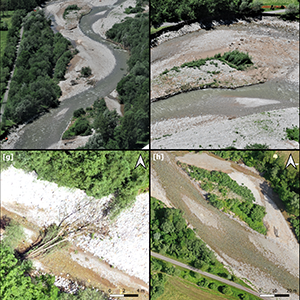Best practices in post-flood surveys: The study case of Pioverna torrent

Published: 28 June 2022
Abstract Views: 2361
PDF: 394
HTML: 27
HTML: 27
Publisher's note
All claims expressed in this article are solely those of the authors and do not necessarily represent those of their affiliated organizations, or those of the publisher, the editors and the reviewers. Any product that may be evaluated in this article or claim that may be made by its manufacturer is not guaranteed or endorsed by the publisher.
All claims expressed in this article are solely those of the authors and do not necessarily represent those of their affiliated organizations, or those of the publisher, the editors and the reviewers. Any product that may be evaluated in this article or claim that may be made by its manufacturer is not guaranteed or endorsed by the publisher.
Similar Articles
- Valentina Giovenzana, Stefano Baroffio, Roberto Beghi, Andrea Casson, Alessia Pampuri, Alessio Tugnolo, Diego De Filippi, Riccardo Guidetti, Technological innovation in the winery addressing oenology 4.0: testing of an automated system for the alcoholic fermentation management , Journal of Agricultural Engineering: Vol. 52 No. 4 (2021)
- Carmelo Riccardo Fichera, Luigi Laudari, Giuseppe Modica, Application, validation and comparison in different geographical contexts of an integrated model for the design of ecological networks , Journal of Agricultural Engineering: Vol. 46 No. 2 (2015)
- Roberto Fanigliulo, Marcello Biocca, Daniele Pochi, Effects of six primary tillage implements on energy inputs and residue cover in Central Italy , Journal of Agricultural Engineering: Vol. 47 No. 3 (2016)
- Zhiqiang Song, Chuanxing Du, Yongcheng Chen, Dianlei Han, Xinzhong Wang, Development and test of a spring-finger roller-type hot pepper picking header , Journal of Agricultural Engineering: Vol. 55 No. 2 (2024)
- Fabrizio Mazzetto, Pasqualina Sacco, Aldo Calcante, Algorithms for the interpretation of continuous measurement of the slurry level in storage tanks , Journal of Agricultural Engineering: Vol. 43 No. 1 (2012)
- Bhola Paudel, Jayanta Kumar Basak, Seong Woo Jeon, Gun Ho Lee, Nibas Chandra Deb, Sijan Karki, Hyeon Tae Kim, Working speed optimization of the fully automated vegetable seedling transplanter , Journal of Agricultural Engineering: Vol. 55 No. 2 (2024)
- Francesca Valenti, Simona M.C. Porto, Giovanni Cascone, Claudia Arcidiacono, Potential biogas production from agricultural by-products in Sicily. A case study of citrus pulp and olive pomace , Journal of Agricultural Engineering: Vol. 48 No. 4 (2017)
- Francesco da Borso, Alessandro Chiumenti, Marco Mezzadri, Francesco Teri, Noxious gases in rabbit housing systems: effects of cross and longitudinal ventilation , Journal of Agricultural Engineering: Vol. 47 No. 4 (2016)
- Fernando Ferreira Abreu, Luiz Henrique Antunes Rodrigues, Monitoring mini-tomatoes growth: A non-destructive machine vision-based alternative , Journal of Agricultural Engineering: Vol. 53 No. 3 (2022)
- Carlos Alejandro Perez Garcia, Marco Bovo, Daniele Torreggiani, Patrizia Tassinari, Stefano Benni, 3D numerical modelling of temperature and humidity index distribution in livestock structures: a cattle-barn case study , Journal of Agricultural Engineering: Vol. 54 No. 3 (2023)
<< < 8 9 10 11 12 13 14 15 16 17 > >>
You may also start an advanced similarity search for this article.

 https://doi.org/10.4081/jae.2022.1312
https://doi.org/10.4081/jae.2022.1312







